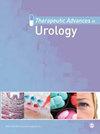nadofaragene firadenovec-vncg 的临床应用
IF 3.5
4区 医学
Q2 UROLOGY & NEPHROLOGY
引用次数: 0
摘要
非肌层浸润性膀胱癌(NMIBC)局限于粘膜(Ta 期,原位癌 (CIS))或粘膜下层(T1 期),占膀胱癌诊断的 75%。卡介苗(BCG)静脉内治疗是高危 NMIBC 的标准初始治疗方法;然而,相当一部分患者对 BCG 无反应。虽然根治性膀胱切除术是这种情况下的最终治疗方法,但并不是所有患者都愿意或能够接受这种复杂的手术,因为这种手术会导致发病率、死亡率和生活质量下降。对于卡介苗无反应的 NMIBC 患者来说,保留膀胱的治疗方案代表了这一患者群体尚未得到满足的需求。Nadofaragene firadenovec-vncg(Adstiladrin)是一种基于腺病毒载体的非复制基因疗法,适用于治疗对卡介苗无反应、伴有或不伴有乳头状肿瘤的CIS的高危NMIBC成人患者。nadofaragene firadenovec 的抗肿瘤疗效是由其向尿道细胞局部传递编码干扰素α-2b(IFNα-2b)基因拷贝驱动的。在 CS-003 III 期研究中,半数以上的 CIS 患者在注射后第 3 个月出现完全反应,严重不良反应极少。良好的疗效和安全性、临床实用性、新颖的作用机制以及每 3 个月一次的用药计划,使 nadofaragene firadenovec 在治疗对卡介苗无反应的高危 NMIBC 中发挥了独特的作用。本综述就灌注前的就诊安排、储存、处理、灌注程序和灌注后的程序提供了有效临床使用纳多法拉基因非拉地诺韦的实用方法。这些建议的实施将确保在现实世界中有效地使用纳多法拉金-非拉地诺韦,并开发出有用的培训材料和相关的标准操作程序,以帮助支持诊所对卡介苗无反应性 NMIBC 伴 CIS 患者的治疗。视频摘要 https://vimeo.com/user17898099/review/953723559/e18af7ec43本文章由计算机程序翻译,如有差异,请以英文原文为准。
Clinical use of nadofaragene firadenovec-vncg
Non-muscle-invasive bladder cancer (NMIBC), which is restricted to the mucosa (stage Ta, carcinoma in situ (CIS)) or submucosa (stage T1), comprises 75% of bladder cancer diagnoses. Intravesical bacillus Calmette-Guérin (BCG) therapy is the standard-of-care initial treatment for high-risk NMIBC; however, a significant proportion of patients have BCG-unresponsive disease. While radical cystectomy is a definitive treatment in this setting, not all patients are willing or able to undergo this complex procedure associated with morbidity, mortality, and decreased quality of life. Bladder-preserving options for patients with BCG-unresponsive NMIBC represent an unmet need in this patient population. Nadofaragene firadenovec-vncg (Adstiladrin) is a nonreplicating adenoviral vector-based gene therapy indicated for the treatment of adult patients with high-risk BCG-unresponsive NMIBC with CIS with or without papillary tumors. The antitumor efficacy of nadofaragene firadenovec is driven by its local delivery of copies of the gene encoding for interferon alpha-2b (IFNα-2b) to urothelial cells. In the phase III CS-003 study, over half of participants with CIS exhibited a complete response by month 3 after instillation, with minimal serious adverse events. The favorable efficacy and safety profile, clinical utility, novel mechanism of action, and every 3-month dosing schedule give nadofaragene firadenovec a unique role in the treatment of high-risk BCG-unresponsive NMIBC. This review provides a practical approach to the effective clinical use of nadofaragene firadenovec regarding pre-instillation visit arrangements, storage, handling, instillation procedures, and post-instillation procedures. Implementation of these recommendations will ensure efficient real-world use of nadofaragene firadenovec and the development of useful training materials and relevant standard operating procedures to help support a clinic’s treatment for patients with BCG-unresponsive NMIBC with CIS.Video Abstract https://vimeo.com/user17898099/review/953723559/e18af7ec43
求助全文
通过发布文献求助,成功后即可免费获取论文全文。
去求助
来源期刊

Therapeutic Advances in Urology
Medicine-Urology
CiteScore
3.70
自引率
0.00%
发文量
39
审稿时长
10 weeks
期刊介绍:
Therapeutic Advances in Urology delivers the highest quality peer-reviewed articles, reviews, and scholarly comment on pioneering efforts and innovative studies across all areas of urology.
The journal has a strong clinical and pharmacological focus and is aimed at clinicians and researchers in urology, providing a forum in print and online for publishing the highest quality articles in this area. The editors welcome articles of current interest across all areas of urology, including treatment of urological disorders, with a focus on emerging pharmacological therapies.
 求助内容:
求助内容: 应助结果提醒方式:
应助结果提醒方式:


